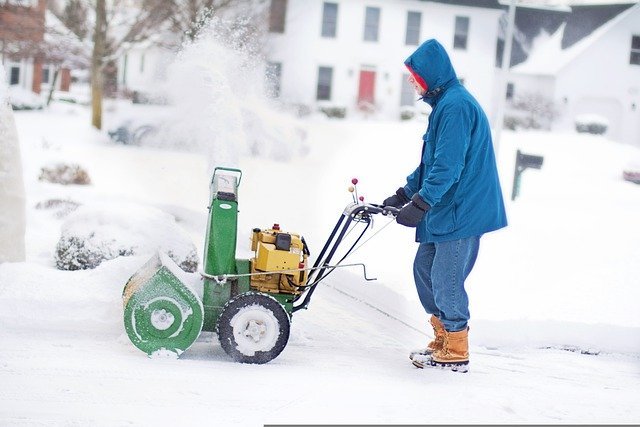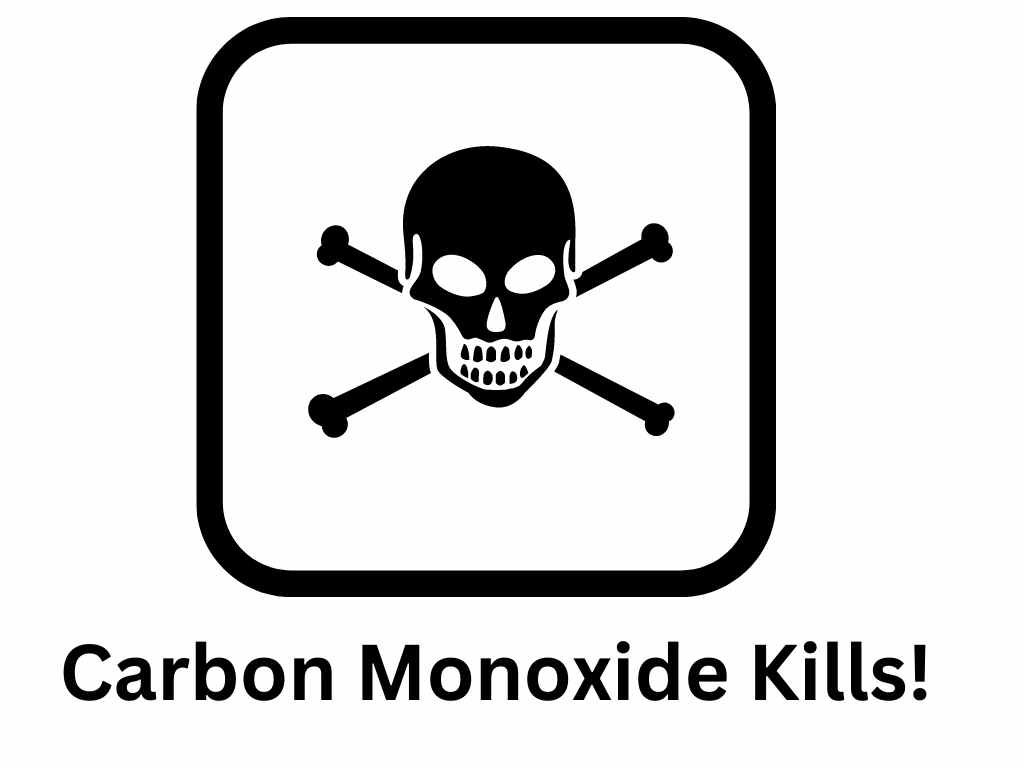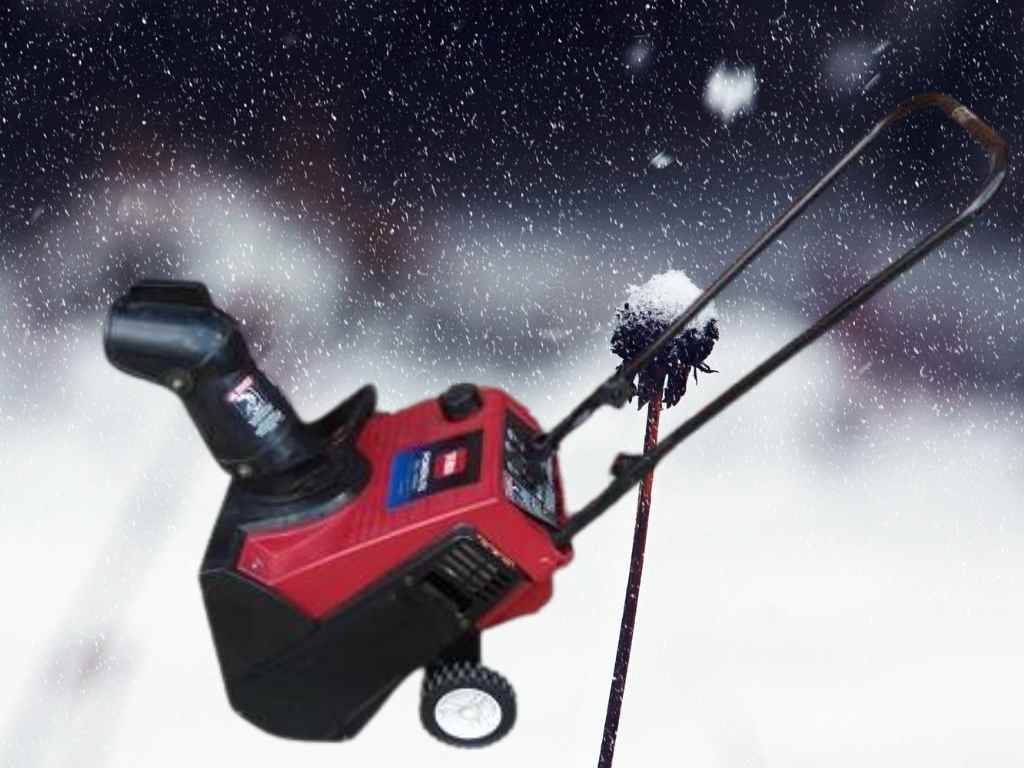We're an affiliate
We hope you love the products we recommend! Just so you know, we may collect a share of sales or other compensation from the links on this page. Thank you if you use our links, we really appreciate it!
As winter quickly approaches, it’s important to review the best way to use your snow blower in order to ensure a safe and clean winter season. This blog post will outline some tips on how to properly operate your snow blower, as well as some safety advice that should be followed.
Without Further Ado… Here are the 20 Snow Blower Use Tips
These snow blowing tips will help you make short work of any snowfall
1. Check the oil and gas
Before each use, it’s important to check the oil and gas levels in your snow blower. This will help ensure that your machine is running properly and can avoid any potential issues. When adding oil, be sure to use the type and grade specified in your owner’s manual.

Check gas tank to see if it needs stabilizer additive if you’re using ethanol-blended fuel. The fresh stabilized fuel will help your engine start easily and run smoothly all season. Use fresh fuel at the beginning of each season and throughout the season, if possible.
2.Take Smaller Bites to Avoid Clogs:
When blowing snow, it’s important to take smaller bites and not try to clear too much snow at once. This will help avoid clogs in the snow blower and make the job go more smoothly.
3. Use a Slow, Steady Motion
When operating your snow blower, it’s important to use a slow and steady motion. This will help you avoid any potential accidents or injuries. Remove snow in a in a way that the blower only has to blow the snow once. Set your chute to blow to the side if possible. Have it blow to the outside edge of the driveway or sidewalk.
4. Don’t Overload the Chute
The chute on your snow blower is designed to hold a certain amount of snow. Overloading it can cause clogs or other issues. This is both a matter of speed and the amount of snow. You can go faster with a lighter, powdery snow than you can with a wet, heavy snow.

5. Keep the Auger Clear
If the auger on your snow blower becomes clogged, it can cause serious damage to the machine. Be sure to keep it clear of any debris or snow. Sometimes limbs and sticks will fall along with the snow. These can damage the snow blower or at the very least it can jam the auger.
6. Don’t Run the Snow Blower in Bare Ground
Running your snow blower on bare ground can damage the blades and your lawn. Be sure to only use it on snow-covered surfaces.
7. Know How to Stop the Snow Blower
In the event of an emergency, it’s important to know how to stop the snow blower quickly. Be sure to familiarize yourself with the machine and know where the stop button is. Newer machines have a safety built in the handle. When you let go of the handle the motor stops. Do not be tempted to override this safety feature.
8. Keep Your Hands and Feet Away from the Moving Parts
The blades on a snow blower can be extremely sharp and powerful. Be sure to keep your hands and feet away from the moving parts to avoid any injuries.
9. Wear Proper Clothing

When operating a snow blower, it’s important to wear proper clothing. This includes gloves, boots, and eye protection and, if it’s a gas powered model, hearing protection. Don’t forget to cover your ears and keep them warm.
10. Be Careful on Slippery Surfaces
Snow and ice can make surfaces very slippery. Be careful when operating a snow blower on slippery surfaces to avoid any accidents.
11. Don’t Leave the Snow Blower Running Unattended
Never leave a running snow blower unattended. This can be extremely dangerous and can result in accidents or injuries.
12. Be Careful of Overhanging Limbs
Be careful of any overhanging limbs when operating a snow blower. These can get caught in the blades and cause serious damage.
13. Don’t Use the Snow Blower on Gravel Unless it has Skid Shoes
Gravel can damage the blades on a snow blower. With skid shoes that are properly adjusted, the snow blower will glide right over the gravel.
14. Keep Children and Pets Away
Children and pets should always be kept away from a running snow blower. This is for their safety and to avoid any accidents.
15. Don’t Make Any Repairs While the Snow Blower Is Running
If you need to make any repairs to the snow blower, be sure to do so with the machine turned off.
16. Be Careful of Carbon Monoxide

Gas engine exhaust contains carbon monoxide. Make sure you point the exhaust of the snow blower away from any open garage doors. The carbon monoxide can build up in the garage and seep into the living area of the house. To be on the safe side, put a carbon monoxide detector in your garage and house.
17. Be Aware of Where You Point the Chute
Snow blowers can blow snow 40 feet or more. If a rock or stick or a chunk of ice is thrown with it, you could cause damage to your house, car or neighbors property. Know where you are throwing the snow.
18. Know Your Machine
Familiarize yourself with the snow blower and know how it works before using it. This will help you avoid any potential accidents. shear pins, skid shoes, chute controls, and the auger.
19. Use the Snow Blower in Well-Lit Areas
It’s important to use the snow blower in well-lit areas so you can see what you’re doing.
20. Follow the Manufacturer’s Instructions
Be sure to read and follow the manufacturer’s instructions before using the snow blower. This will help you avoid any potential accidents.
By following these tips, you can ensure a safe and successful winter season.
FAQs:
How do I know if my snow blower is the right size for my needs?
There are a few things to consider when choosing a snow blower. The first is the size of the area you need to clear. A small snow blower will be sufficient for a driveway or walkway, but you’ll need a larger model if you have a large area to clear. The second thing to consider is the type of snow you’ll be dealing with. If you live in an area with heavy, wet snow, you’ll need a snow blower that can handle that type of snow. And if you live in an area that gets a lot of deep snow, you will want a snow blower that can blow the snow high and far.
What is the best way to operate my snow blower?
There are a few things to keep in mind when operating a snow blower. First, always read the manufacturer’s instructions before using the snow blower. Second, clear the area you’ll be using the snow blower before starting it.
This will help to prevent any rocks or debris from being thrown by the snow blower. Third, start the snow blower slowly and gradually increase the speed as needed. Fourth, when clearing a path, make sure to overlap your previous path to ensure that all the snow is being cleared. Finally, when you’ve finished using the snow blower, switch it off and clear any snow that has built up on the machine itself.
What are some safety tips I should follow when using my snow blower?
There are a few safety tips to keep in mind when using a snow blower.
First, always wear proper safety gear, including gloves, boots, and eye protection.
Second, never put your hands or feet near the snow blower while it’s running.
Third, keep children and pets away from the snow blower while it’s running.
Fourth, never try to clear a jam with your hands – instead, shut off the throw snow blower and use a stick or other object to clear the jam.
Finally, be aware of your surroundings and be sure to clear any obstacles before using the blower.
Following these tips will help you to have a safe and successful winter season.
Electric snow blowers vs shovels?
While electric snow shovels are a new kind of equipment that are gaining in popularity all the time, they might not be the best choice for everyone. Snow blowers can clear a larger area in less time, and they can also handle heavier and wetter snow. However, electric snow shovels are much easier to use and require less effort than a regular snow shovel. Ultimately, the choice between an electric snow blower and an electric snow shovel depends on your needs and preferences.
Two-stage snow blowers?
A two-stage snow blower is a Snow Blower that has two augers. The first auger scoops up the snow and the second auger propels it up through the chute and out of the snow blower. Two-stage snow blowers are more powerful than single-stage snow blowers and can handle deeper snow depths. They’re also typically more expensive. The chute clean out tool is an important feature on a two-stage Snow Blower. This tool helps to clear any snow that has built up in the chute, which can cause the Snow Blower to clog.
Conclusion
Now that you know how to properly operate a snow blower, as well as some safety advice to follow, you’re ready to tackle the winter season. Be sure to review these tips before using your electric snow blow, and always exercise caution when operating any type of machinery. With a little preparation, you can enjoy a safe and clean winter season.


1 thought on “20 Snow Blower Use Tips That You Need to Know”